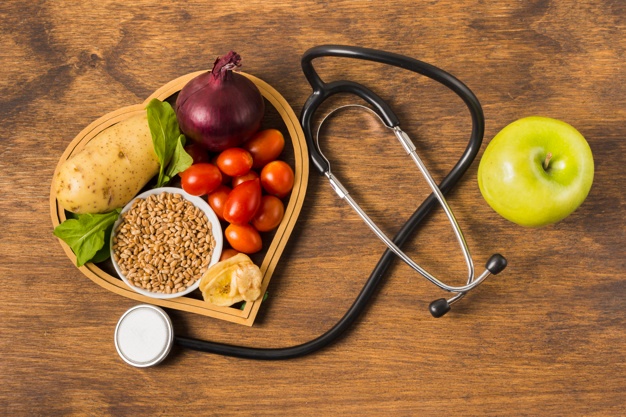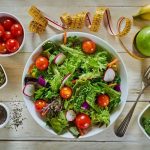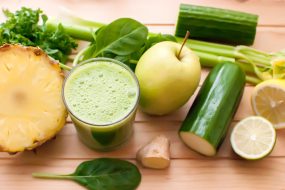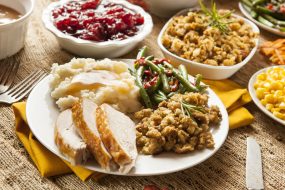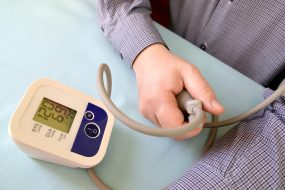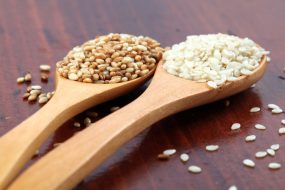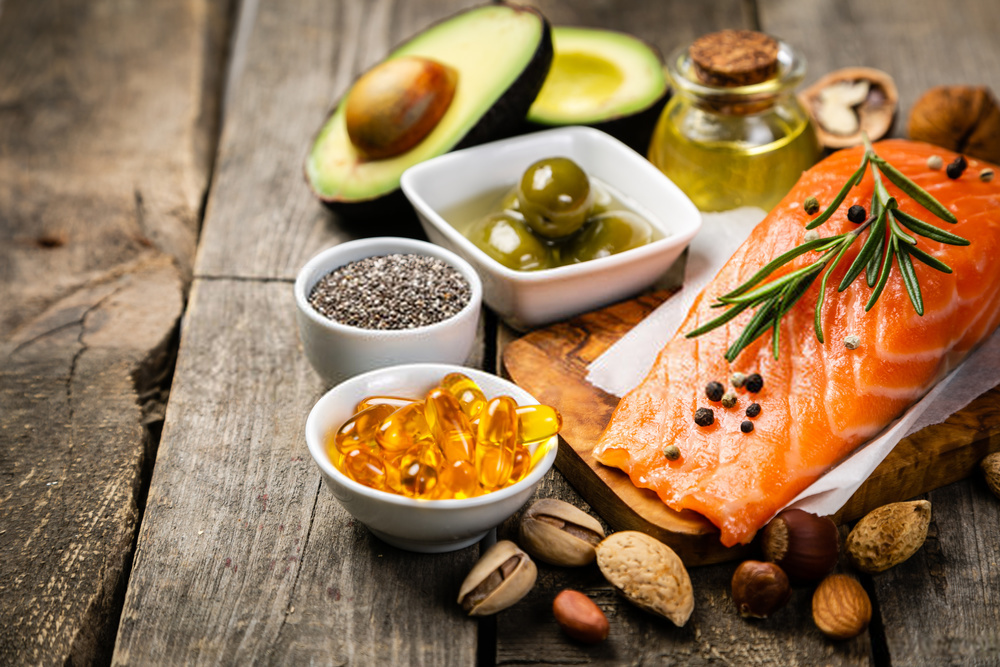
Five million people die from stroke every year. Those deaths can be cruel and lingering. These 9 foods can help keep you safe
Worldwide five million people die from stroke every year accounting for about 10 percent of total deaths.[i] But those deaths can be cruel and lingering. In just moments, you can go from happy, active, and productive to the helpless prisoner of a useless body.
“© GreenMedInfo LLC. The work below is reproduced and distributed with the permission of GreenMedInfo LLC. Want to learn more from GreenMedInfo? Sign up for the newsletter here www.greenmedinfo.com/greenmed/newsletter.”
The original article link:
https://www.greenmedinfo.com/blog/9-foods-cut-your-risk-deadly-stroke
Ischemic stroke occurs as a result of a blockage within a blood vessel supplying blood to the brain. It accounts for 87 percent of all stroke cases. Hemorrhagic stroke is usually caused by uncontrolled high blood pressure. It occurs when a weakened blood vessel ruptures.
Research shows that following a Mediterranean-type diet can be a first step to prevent stroke. In a recent 10-year Swedish study of 32,921 women published in the journal Atherosclerosis, researchers found that a modified Mediterranean diet cut the risk of ischemic stroke by more than 22 percent.
The diet was high in vegetables, fruits, legumes, nuts, whole grains, fermented dairy products, fish, and monounsaturated fats. It also included moderate amounts of alcohol and low consumption of red meat.
Here are 9 healthy foods you can start eating right now to help cut your risk of a deadly stroke.
1. Fish
An expert panel convened by The Harvard Center for Risk Analysis conducted a literature review to determine a dose-response relationship between fish consumption and stroke risk. They concluded that eating any fish at all lowered stroke risk by 12 percent compared to eating none. And they estimated that stroke risk dropped an additional 2 percent with each additional serving of fish per week.
A later study by Harvard researchers examined data from 43,671 men from The Health Professional Follow-up Study, a US prospective cohort study with 12 years of follow-up. It found that compared to men who ate fish less than once per month, those who ate fish one to three times per month had a 43 percent lower risk of ischemic stroke. But eating fish five or more times per week was not associated with any further risk reduction.
The same is true for women. The Nurses’ Health Study followed 79,839 women for 14 years. It found that compared to women who ate fish less than once per month those who ate fish five times a week reduced their ischemic stroke risk by 52 percent. Eating fish two to four times per week reduced risk by 27 percent, and eating it once a week lowered risk by 22 percent.
But choose your fish wisely. Yet another Harvard study found that eating tuna or other broiled or baked fish one to four times per week reduced ischemic stroke risk by 27 percent compared to eating it once a month. But people who ate fried fish or fish sandwiches more than once a week had a 44 percent higher ischemic stroke compared to those who only ate those types of fish less than once per month.
2. Pumpkin Seeds
A meta-analysis of eight studies covering 304,551 participants found those with the highest magnesium intake had a 12 percent lower risk of ischemic stroke and an 11 percent lower risk of total stroke compared to the lowest intake.
And a recent study in the American Journal of Clinical Nutrition linked magnesium to lower rates of stroke in women. Harvard researchers examined data from 86,149 women in the Nurses’ Health Study I and 94,715 women in the Nurses’ Health Study II. In up to 30 years of follow-up they found that women getting the most magnesium had a 13 percent lower risk of total stroke compared to women getting the least. They also found that for each additional 100 mg. of magnesium woman consumed every day, risk dropped 13 percent.
Results are similar for men. Harvard researchers examined data from 42,669 men in the Health Professionals Follow-up Study. During 24 years of follow-up they found that men who got the most magnesium from food reduced their total stroke risk by 13 percent compared to those getting the least. Those getting their magnesium from supplements reduced their total stroke risk by 26 percent. And those getting a mix of dietary magnesium and supplements reduce their risk by 17 percent.
Another recent study in the International Journal of Cardiology found that magnesium lowers blood pressure as well as total stroke risk. In a cohort study from the EPIC (European Prospective Investigation into Cancer)-Norfolk cohort, men with the highest magnesium intake significantly reduced their systolic blood pressure by 7 mmHg and their diastolic pressure by 3.8 mmHg.
Spinach, Swiss chard, and beet greens are excellent sources of magnesium. Pumpkin seeds are also a very good source.
3. Fruits and Vegetables
Not surprisingly, fruits and vegetables help prevent stroke. In a recent prospective Swedish study of 74,961 people over 10 years, those eating the most fruits and vegetables had a 13 percent lower risk of total stroke compared to those eating the least. Specific fruits and vegetables that stood out included apples, pears, and leafy greens.
Daily fruit intake was linked with a 35% reduction in risk of total stroke in men and a 25% reduction in women. Fruit was equally strong for both ischemic and hemorrhagic stroke.
And a meta-analysis of 20 prospective cohort studies found those eating the most fruits and vegetables had a 21 percent lower total stroke risk compared to those eating the least. Vegetables were more powerful than fruits. The drop in stroke risk for vegetables was 23 percent compared to 14 percent for fruit. But for every 200 extra grams of fruit, stroke risk dropped 32 percent compared to 11 percent for every 200 extra grams of vegetables.
In another study using data from 39,337 people in the Life Span Study, Japanese researchers found that eating green and yellow vegetables and fruits cut stroke risk. During an 18-year follow-up people who ate green-yellow vegetables every day had a 26 percent decrease in risk of death from total stroke compared to people who ate them only once a week or less. Ischemic stroke was cut 32 percent in men and 30 percent in women.
Fruits and vegetables may protect against stroke because they help lower blood pressure and have antioxidant effects. They are also rich sources of vitamins and minerals like vitamin C, beta carotene, potassium, magnesium, calcium, folate, and fiber. In another meta-analysis of 71 studies in the journal Stoke the highest blood levels of lutein were linked to an 18 percent drop in strokes compared to the lowest.
Fruits and vegetables highest in lutein include:
- Corn
- Kiwi fruit
- Red and green grapes
- Zucchini and yellow squash
- Pumpkin and butternut squash
- Spinach
- Cucumber
- Peas
- Green peppers
- Celery
- Brussels sprouts
- Scallions
- 4. Tea
In a case-control study of 374 ischemic stroke patients and 464 control subjects in China tea drinking was linked to lower stroke rates. Make it a habit. People who drank tea most frequently cut their stroke risk by 39 percent while those who had the tea habit for the most years cut their risk by 60 percent.
5. Olive Oil
Olive oil has been a mainstay of the Mediterranean diet for thousands of years. Research shows olive oil helps prevent stroke.
In a study published online in Neurology French researchers suggested that olive oil would be an inexpensive and easy way to help prevent stroke in people over 65. Based on medical records of 7,625 people ages 65 and older they found that intensive use of olive oil reduced stroke risk by 41 percent compared to not using olive oil at all. “Intensive use” of olive oil included using it for both cooking, as a salad dressing, and as a dip for bread.
Most of the study subjects used extra virgin olive oil. Other studies have found that extra virgin olive oil, obtained from the first pressing of the olives, is healthier than oil labeled “virgin olive oil” or just “olive oil.” This is because the extra virgin oil contains higher levels of anti-inflammatory compounds which protect against unwanted inflammation.
6. Soy
A recent case-control study of 374 ischemic stroke patients and 464 controls found those eating the most soy cut their risk of stroke by 77 percent compared to those eating the least. Forms of soy studied included dried soybeans, tofu, and soymilk.
The power of soy may lie in its isoflavone content. A Japanese study found that women with the highest isoflavone intake cut their ischemic stroke risk by 65 percent compared to the lowest intake. And those eating soy (beans and miso) more than five times a week reduced their risk by a lower 36 percent compared with those eating soy twice a week or less.
7. Chocolate
Researchers from Cambridge University conducted a meta-analysis of seven chocolate studies including 114,009 participants. They found that people eating the most chocolate cut stroke risk by 29 percent compared to those who ate the least.
And in a prospective study of 19,357 German adults in the Potsdam arm of the European Prospective Investigation into Cancer and Nutrition, those eating chocolate most frequently (just 6 grams per day) reduced their stroke risk by 39 percent compared to those who ate little.
8. Coffee
A meta-analysis of nine studies by Korean researchers showed that drinking four cups or more per day of coffee reduced total stroke risk by 17 percent compared to non-drinkers. It reduced ischemic stroke risk by 20 percent.
9. Wine
Researchers from Columbia University analyzed alcohol use in 464 people in the Aortic Plaques and Risk of Ischemic Stroke (APRIS) study. They found that a smaller percentage of stroke patients (35.5 percent) engaged in light to moderate alcohol use (between 1 drink per month and 2 drinks daily) compared to the healthy controls (60.3 percent). They also found that alcohol consumption at any level was inversely associated with an atherosclerotic plaque in the aorta, which is associated with increased stroke risk. The authors suggested that this reduced plaque in the aorta might explain why moderate drinkers have a lower risk of ischemic stroke.
PS: If you’re interested in getting back into your prime shape this year using a different approach and not more of the same conventional stuff that hasn’t really worked for anyone you personally know so far, I want to encourage you to try my method that is based on metabolic studies and digs deep into how our bodies process food, store fat or convert it to energy – not of the amount of will power that you have.
For a limited time I am extending the invitation for my System Minus 45 Natural Weight Loss Program (a system aimed at fine-tuning and resetting your metabolism, as opposed to calorie counting or workouts) — for only $1 for the first month: Learn More about the program and how it works.

